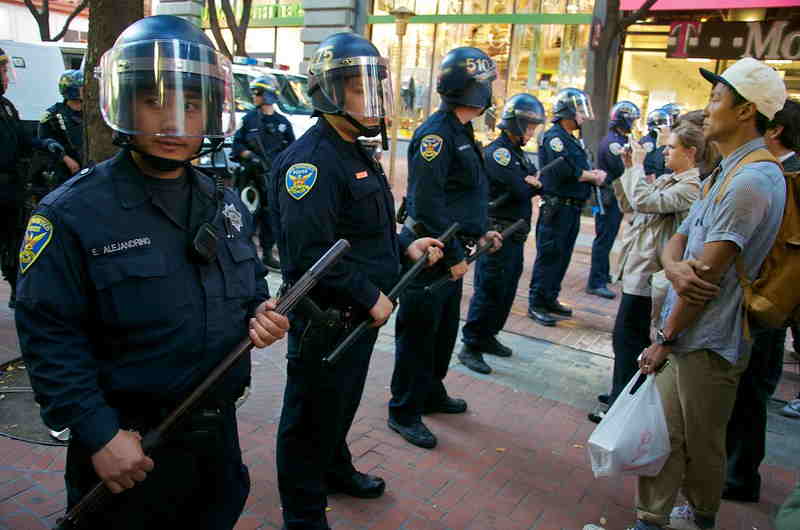San Francisco police linked a woman to a crime using DNA from her rape exam, D.A. Boudin says
By Megan Cassidy,
San Francisco Chronicle
| 02. 14. 2022
Photo of SFPD by Steve Rhodes (CC BY-NC-ND 2.0)
Update: D.A. Chesa Boudin has dismissed the case against the suspect allegedly linked to a property crime from her rape exam DNA.
The San Francisco police crime lab has been entering sexual assault victims’ DNA profiles in a database used to identify suspects in crimes, District Attorney Chesa Boudin said Monday, an allegation that raises legal and ethical questions regarding the privacy rights of victims.
Boudin said his office was made aware of the purported practice last week, after a woman’s DNA collected years ago as part of a rape exam was used to link her to a recent property crime.
If DNA from a rape kit were used without consent for purposes other than investigating the underlying rape case, it may be a violation of constitutional protections against unreasonable searches and seizures as well as California’s Victims’ Bill of Rights, Boudin said.
Such a practice could also create another deterrent to sexual assault victims coming forward with allegations that are already underreported to law enforcement.
“The primary...
Related Articles
By Josie Ensor, The Times | 12.09.2025
A fertility start-up that promises to screen embryos to give would-be parents their “best baby” has come under fire for a “misuse of science”.
Nucleus Genomics describes its mission as “IVF for genetic optimisation”, offering advanced embryo testing that allows...
By Hannah Devlin, The Guardian | 12.06.2025
Couples undergoing IVF in the UK are exploiting an apparent legal loophole to rank their embryos based on genetic predictions of IQ, height and health, the Guardian has learned.
The controversial screening technique, which scores embryos based on their DNA...
By Frankie Fattorini, Pharmaceutical Technology | 12.02.2025
Próspera, a charter city on Roatán island in Honduras, hosts two biotechs working to combat ageing through gene therapy, as the organisation behind the city advertises its “flexible” regulatory jurisdiction to attract more developers.
In 2021, Minicircle set up a...
By Vardit Ravitsky, The Hastings Center | 12.04.2025
Embryo testing is advancing fast—but how far is too far? How and where do we draw the line between preventing disease and selecting for “desirable” traits? What are the ethical implications for parents, children, clinicians, and society at large? These...




